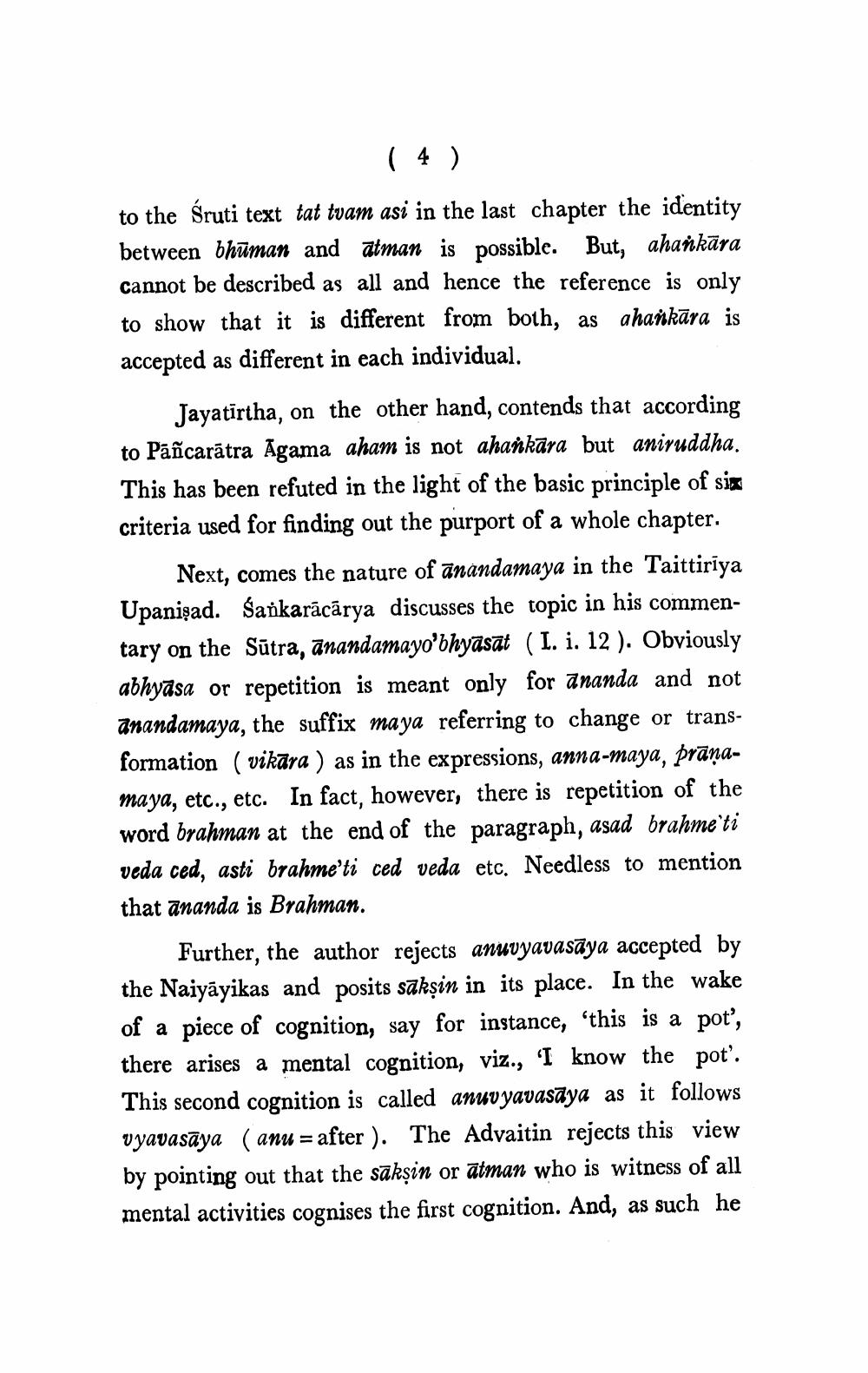Book Title: Adwait Dipika Part 01 Author(s): S Subramanya Shastri Publisher: Sampurnand Sanskrit Vishvavidyalaya View full book textPage 9
________________ ( 4 ) to the Sruti text tat tvam asi in the last chapter the identity between bhuman and atman is possible. But, ahankara cannot be described as all and hence the reference is only to show that it is different from both, as ahankara is accepted as different in each individual. Jayatirtha, on the other hand, contends that according to Pancaratra Agama aham is not ahankara but aniruddha. This has been refuted in the light of the basic principle of six criteria used for finding out the purport of a whole chapter. Next, comes the nature of anandamaya in the Taittiriya Upanisad. Sarkaracarya discusses the topic in his commentary on the Sutra, anandamayo'bhyasat (I. i. 12 ). Obviously abhyasa or repetition is meant only for ananda and not anandamaya, the suffix maya referring to change or transformation ( vikara ) as in the expressions, anna-maya, pranamaya, etc., etc. In fact, however, there is repetition of the word brahman at the end of the paragraph, asad brahme'ti veda ced, asti brahme'ti ced veda etc. Needless to mention that ananda is Brahman. Further, the author rejects anuvyavasaya accepted by the Naiyayikas and posits saksin in its place. In the wake of a piece of cognition, say for instance, "this is a pot, there arises a mental cognition, viz., 'I know the pot'. This second cognition is called anuvyavasaya as it follows vyavasaya (anu = after ). The Advaitin rejects this view by pointing out that the saksin or atman who is witness of all mental activities cognises the first cognition. And, as such hePage Navigation
1 ... 7 8 9 10 11 12 13 14 15 16 17 18 19 20 21 22 23 24 25 26 27 28 29 30 31 32 33 34 35 36 37 38 39 40 41 42 43 44 45 46 47 48 49 50 51 52 53 54 55 56 57 58 59 60 61 62 63 64 65 66 67 68 69 70 71 72 73 74 75 76 77 78 79 80 81 82 83 84 85 86 87 88 89 90 91 92 ... 298
